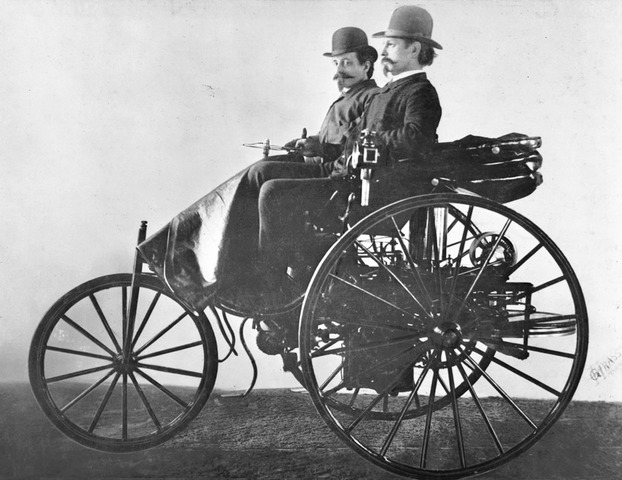The earliest recorded sort of carriage was the chariot, reaching Mesopotamia as early as 1900 BC. Used typically for warfare by Egyptians, the Near Easterners and Europeans, it was essentially a two-wheeled light basin carrying one or two passengers, drawn by one to two horses.
Additionally, How many wheels does a jaunting car have? The Jaunting Car has 14 spoke Warner wheels with rubber tyres in clincher channels on collinge axles.
Who invented horse cart? The cart, usually drawn by a single animal, is known to have been in use by the Greeks and the Assyrians by 1800 bc (although it is generally assumed that such vehicles could have been used as early as 3500 bc as an extension of the invention of the wheel).
Subsequently, Did Studebaker make wagons? Studebaker made many types of wagons, carriages and other horse drawn vehicles throughout their history, a few among them are the Phaeton, the Victoria and the Brougham.
FAQ
Who invented the horse drawn cart?
Among the first horse-drawn vehicles was the chariot, invented by the Mesopotamians in about 3000 B.C. It was a two-wheeled cart used at first in royal funeral processions.
When did we stop using horse and cart? Freight haulage was the last bastion of horse-drawn transportation; the motorized truck finally supplanted the horse cart in the 1920s.” Experts cite 1910 as the year that automobiles finally outnumbered horses and buggies. Nowadays, the Amish still use horse and buggy rides to get around.
Do carriages hurt horses? Making horses pull oversized loads like carriages is cruel. Horses are forced to toil in all weather extremes, dodge traffic, and pound the pavement all day long. They may develop respiratory ailments because they breathe in exhaust fumes, and they can suffer debilitating leg problems from walking on hard surfaces.
How big is a carriage? Standard carriage is 5-10 ft wide and 10-15 ft long not counting the horses.
What killed Studebaker?
On this day in 1933, American automaker Studebaker, then heavily in debt, goes into receivership. The company’s president, Albert Erskine, resigned and later that year died by suicide.
Is Studebaker a Ford? Packard Motor Car Company bought Studebaker Corporation in 1954 and formed Studebaker-Packard Corporation. The resulting company had a hard time competing with General Motors, Ford and Chrysler, and from 1954 to 1958, Studebaker-Packard didn’t turn a profit.
Who is Studebaker Hawk?
The Studebaker-Packard Hawk series were cars produced by the merged Studebaker-Packard corporation between 1956 and 1964. All but the 1958 Packard Hawk were badged Studebaker. Described by the company as « family sports cars », they were all two-door, four-seat coupes and hardtops.
When did people stop using horse-drawn carriages? Freight haulage was the last bastion of horse-drawn transportation; the motorized truck finally supplanted the horse cart in the 1920s.” Experts cite 1910 as the year that automobiles finally outnumbered horses and buggies. Nowadays, the Amish still use horse and buggy rides to get around.
When did horse carriage End UK?
Horse and van and were replaced, in the main, by motorised delivery vehicles from around the 1920s.
Are horse-drawn carriages cruel?
Making horses pull oversized loads like carriages is cruel. Horses are forced to toil in all weather extremes, dodge traffic, and pound the pavement all day long. They may develop respiratory ailments because they breathe in exhaust fumes, and they can suffer debilitating leg problems from walking on hard surfaces.
How quickly did cars replace horses? In one decade, cars replaced horses (and bicycles) as the standard form of transport for people and goods in the United States.
Why is a buggy called a buggy? In England, where the term seems to have originated late in the 18th century, the buggy held only one person and commonly had two wheels. By the mid-19th century the term had come to the United States and the buggy had become a four-wheeled carriage for two passengers.
Why did we switch from horses to cars?
Automobiles replaced horses largely because of pollution, and now automobiles are one of the leading cause of the planet’s Co2 pollution and other serious problems.
Are carriage horses treated well? Contrary to what many may believe about these horses and the environment that they live in, the horses are in good health and are living in an appropriate stable with excellent care. These horses are being treated with pride and compassion, often by their individual owners/drivers.
Do horses like being ridden?
Most horses are okay with being ridden. As far as enjoying being ridden, it’s likely most horses simply tolerate it rather than liking it. However, as you’ll read, the answer isn’t definitive and is different for each horse. While horses have long been selectively bred for riding, they didn’t evolve to carry humans.
Do horses like to pull carriages? If you’ve ever walked around a big city or even some small tourist towns before, you may have seen horses pulling a carriage with people in it. Horses are pretty awesome animals—they’re strong, smart, and loving. But do you know what’s not awesome? Horses suffer when they’re used to pull carriages.
Which animal draw a carriage or a cart?
The draught animals used for carts may be horses, donkeys or mules, oxen, and even smaller animals such as goats or large dogs.
How big is a horse cart? Accurate measurement is important to make sure buggy shafts fit the horse: typically 87 inches in length for draft horses, 75 or 76 inches for most saddle horses, 60 to 65 or 66 inches for small to large ponies and 48 or 54 inches for miniature horses.
How big is a cart?
A real life cart is about 4 ft long, 2-3 ft wide. A wagon is more like 8 ft long (not including horses and related gear) and 3-4 ft wide. But most likely closer to 3 ft than 4 ft. (has to fit on the same roads a cart is used on).
Don’t forget to share this post !























